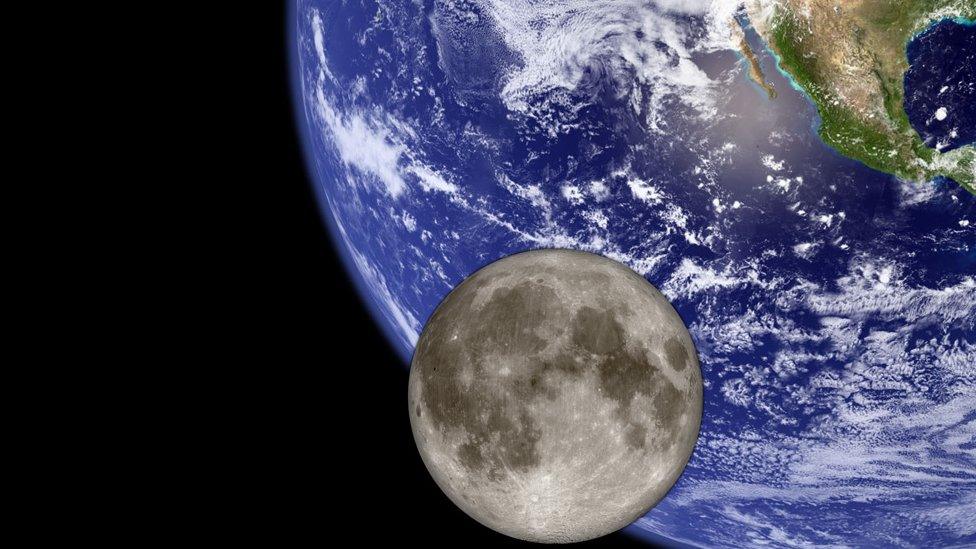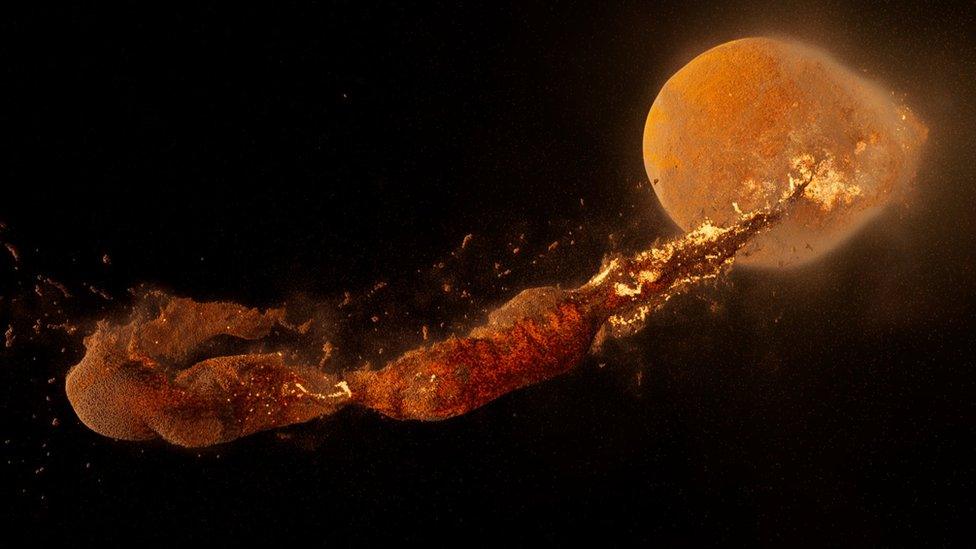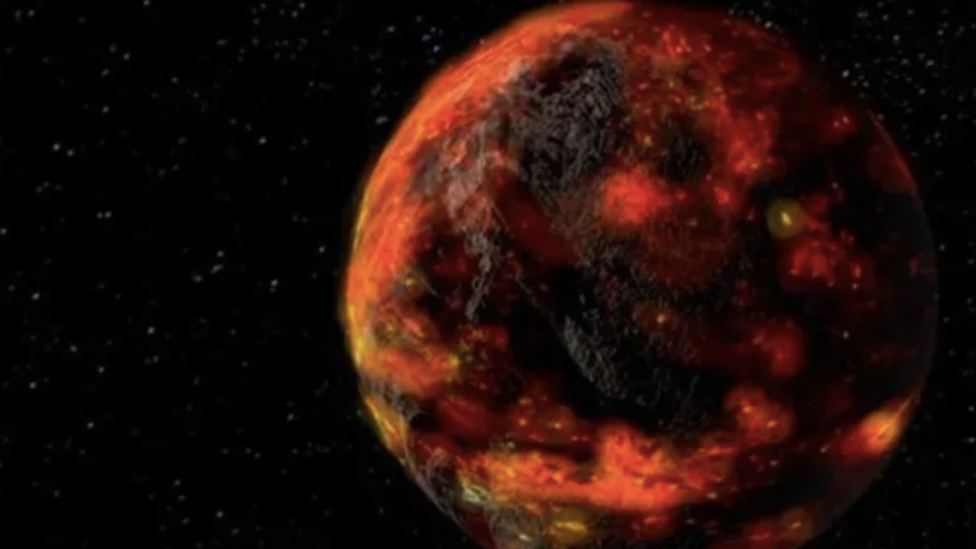Scientists think they've come up with a new way for how the Moon formed
- Published
- comments

A group of scientists think they've worked out a new way for how the Moon was formed!
There are a few different theories on how our Moon came into being, so the scientists decided to use a supercomputer to test a few of them out.
They ran some simulations - which means doing tests that create similar or the same conditions as a situation - and wrote a report on their findings.
They say the results have given them a much clearer picture of where our Moon came from.
So how DID our Moon form?

There are a few different theories about how our Moon formed, but the most widely accepted one is the 'giant-impact' or 'collision' theory.
It says that the Moon was formed when the Earth and another small planet called Theia - about the size of Mars - crashed into each other.
The leftover debris from Earth and Theia's impact then fused together to form the Moon.
The newly formed Moon then began orbiting around the Earth.
The Moon is around 240,000 miles away from the Earth.
From looking at the simulations, the scientists think the Moon might have formed instantly in a few hours after the big crash, which took place around 4.5 million years ago.
Other scientists have looked at other ideas, argued that the Moon formed slowly over a much longer period of time.
Scientists hope that future space missions such as Nasa's Artemis mission - which will bring back samples from the Moon to Earth - will help to confirm one these theories.
- Published17 January 2022

- Published20 July 2019

- Published18 August 2022
